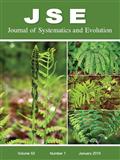Gemma MAS DE XAXARS, Alfredo GARCíA-FERNÁNDEZ, Pere BARNOLA, Joan MARTíN, Arnau MERCADÉ, Joan VALLÉS, Pablo VARGAS, Josep VIGO, Teresa GARNATJE
Hybridization has played an important role in Saxifraga evolution causing reticulation and a high number of described hybrids, but little is known about how hybrid speciation had occurred in the genus. We focus on a group of closely related Saxifraga species of the subsection Triplinervium from Pyrenees, the phylogenetic relationships of which remain unsolved. Trying to unmask cryptic (or ancient) hybridization processes, we analyze one nuclear (ITS) and three plastid regions (rpl32-trnL, trnS-trnG-trnG, and 3′trnV-ndhC), as well as nuclear DNA content. Pollen and seed morphology and viability studies were carried out to evaluate the status of spontaneous hybrids. DNA ploidy levels were also inferred for the two Madeiran taxa (of the same Saxifraga subsection), where recent hybridization processes are not expected. Molecular markers revealed multiple reticulation events, which, as suggested by DNA content and chromosome numbers, have occurred in homoploidy (without genome doubling after hybridization). In addition, autopolyploidy has occurred in some species or populations, especially in the Madeiran archipelago colonization. Chromosome number variation appears to be related to centric fission events, which also could lead to the formation of the B chromosomes inferred in some taxa. Spontaneous hybrids do not produce viable seeds and this could be due to differences in parental chromosome numbers. Hybrid speciation has probably been successful by chromosomal arrangements, which also generated new, more or less intermediate, chromosomal numbers in this group of taxa.

